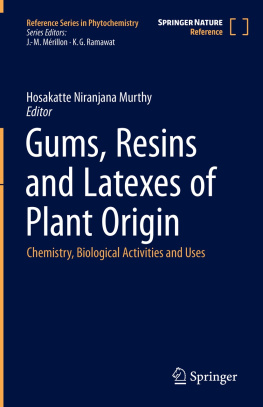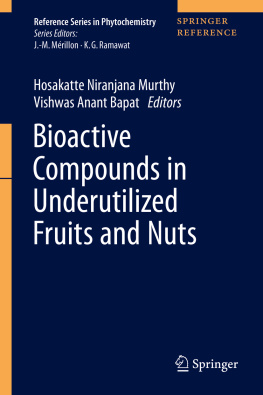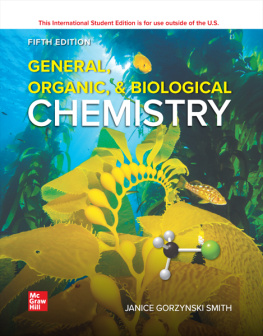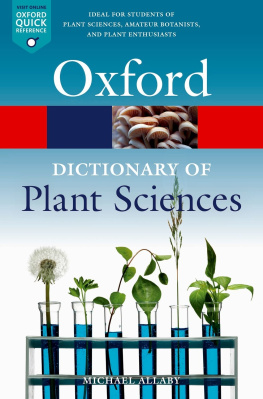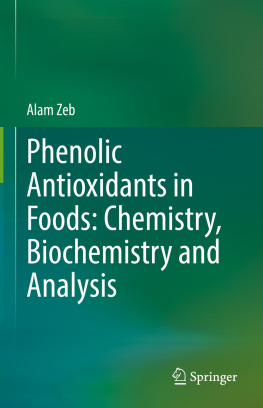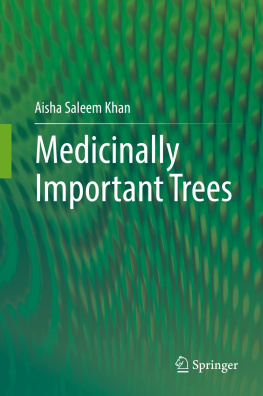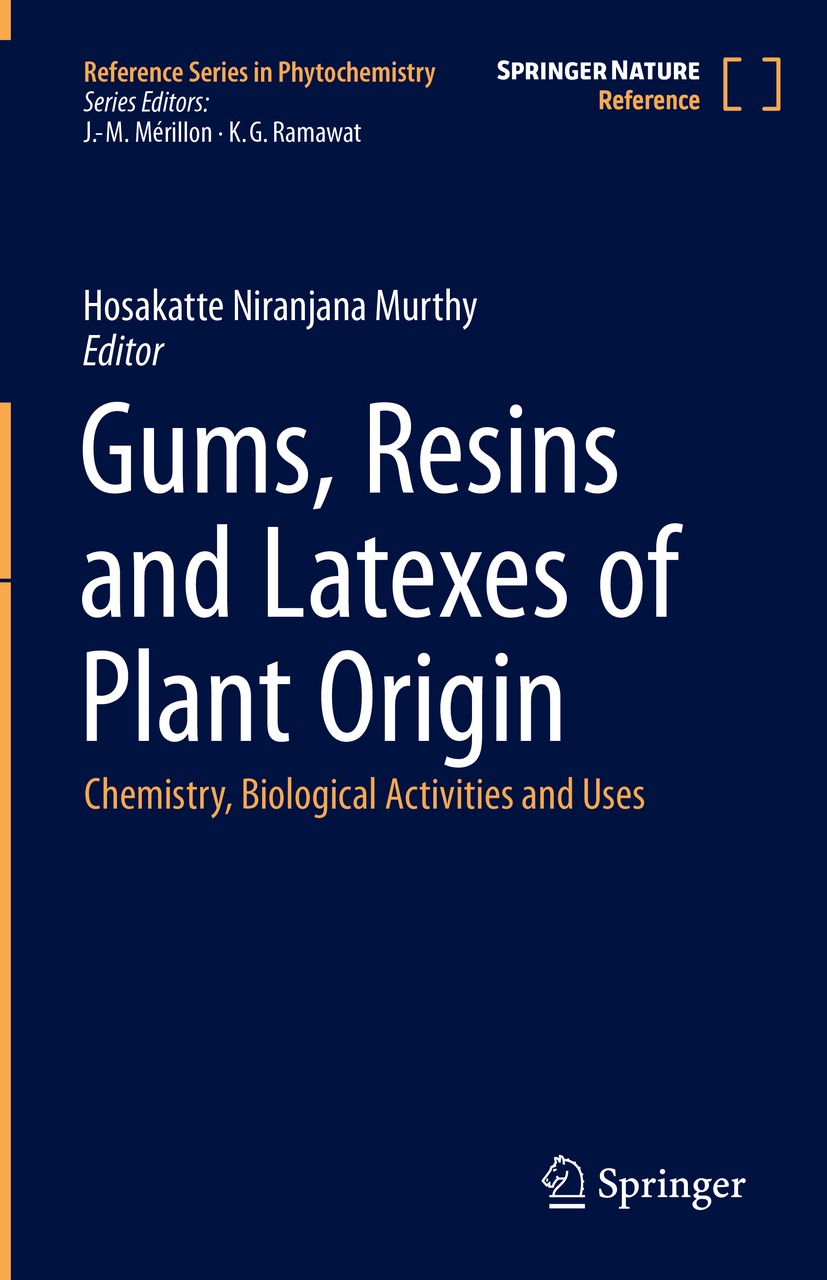Reference Series in Phytochemistry
Series Editors
Jean-Michel Mrillon
Faculty of Pharmaceutical Sciences, Institute of Vine and Wine Sciences, University of Bordeaux, Villenave dOrnon, France
Kishan Gopal Ramawat
Department of Botany, University College of Science, M. L. Sukhadia University, Udaipur, Rajasthan, India
This series provides a platform for essential information on plant metabolites and phytochemicals, their chemistry, properties, applications, and methods.
By the strictest definition, phytochemicals are chemicals derived from plants. However, the term is often also used to describe the large number of secondary metabolic compounds found in and derived from plants. These metabolites exhibit a number of nutritional and protective functions for human wellbeing and are used e.g. as colorants, fragrances and flavorings, amino acids, pharmaceuticals, hormones, vitamins and agrochemicals.
The series offers extensive information on various topics and aspects of phytochemicals, including their potential use in natural medicine, their ecological role, role as chemo-preventers and, in the context of plant defense, their importance for pathogen adaptation and disease resistance. The respective volumes also provide information on methods, e.g. for metabolomics, genetic engineering of pathways, molecular farming, and obtaining metabolites from lower organisms and marine organisms besides higher plants. Accordingly, they will be of great interest to readers in various fields, from chemistry, biology and biotechnology, to pharmacognosy, pharmacology, botany and medicine.
The Reference Series in Phytochemistry is indexed in Scopus.
Editor
Hosakatte Niranjana Murthy
Gums, Resins and Latexes of Plant Origin
Chemistry, Biological Activities and Uses
With 235 Figures and 92 Tables

Logo of the publisher
Editor
Hosakatte Niranjana Murthy
Department of Botany, Karnatak University, Dharwad, Karnataka, India
ISSN 2511-834X e-ISSN 2511-8358
Reference Series in Phytochemistry
ISBN 978-3-030-91377-9 e-ISBN 978-3-030-91378-6
https://doi.org/10.1007/978-3-030-91378-6
Springer Nature Switzerland AG 2022
This work is subject to copyright. All rights are reserved by the Publisher, whether the whole or part of the material is concerned, specifically the rights of translation, reprinting, reuse of illustrations, recitation, broadcasting, reproduction on microfilms or in any other physical way, and transmission or information storage and retrieval, electronic adaptation, computer software, or by similar or dissimilar methodology now known or hereafter developed.
The use of general descriptive names, registered names, trademarks, service marks, etc. in this publication does not imply, even in the absence of a specific statement, that such names are exempt from the relevant protective laws and regulations and therefore free for general use.
The publisher, the authors, and the editors are safe to assume that the advice and information in this book are believed to be true and accurate at the date of publication. Neither the publisher nor the authors or the editors give a warranty, expressed or implied, with respect to the material contained herein or for any errors or omissions that may have been made. The publisher remains neutral with regard to jurisdictional claims in published maps and institutional affiliations.
This Springer imprint is published by the registered company Springer Nature Switzerland AG
The registered company address is: Gewerbestrasse 11, 6330 Cham, Switzerland
Preface
Natural gums and mucilage are plant secretions, exuding naturally or on incision or infection, which usually harden on drying and are soluble in water. Gums are polysaccharides, which are complex carbohydrates. Gums are an important ingredient in pharmaceutical preparations owing to their biodegradability, abundant availability, non-toxicity, and low cost. Gums are also known for their multifarious uses in food industries like baking, meat, fruit, and vegetables.
Resins are non-volatile products of plants from which they exude naturally (surface resins) or can be obtained by incision or infection (internal resins). They are insoluble in water but soluble in an organic solvent. They are lipid-soluble mixtures of volatile and non-volatile terpenoids, alkaloids, and phenolic compounds. Plant resins are valued for the production of varnishes, adhesives, and glazing agents. They are also used as incense and perfumes.
Latexes are colloidal suspensions or emulations of water-insoluble substances suspended in an aqueous phase, which may be released on cutting a plant. They are produced in specialized internal secretary structures called laticifers. The suspensions may consist of terpenoids, phenolics, alkaloids, proteins, essential oils, and other compounds. Plant latex is a source of natural rubber that is used in the preparation of products such as gloves, condoms, and latex clothing.
With this backdrop, this book encompasses research work on bioactive compounds in natural gums, resins, and latexes across the globe to present the latest research for the enhanced appreciation of this topic. The chapters presented in this volume focus on several research subjects that have provided critical information on the natural plant-based gums, resins, and latexes, as well as their chemical composition, properties, and bioactive principles. There is a wealth of useful references that should prove to be an invaluable source for the reader. Self-explanatory illustrations and tables have been incorporated into each chapter, complementary to the main text.
I would like to thank and express my deepest gratitude to all the contributors who helped me to complete this book. I also thank Professor Jean-Michel Merillon and Professor Kishan Gopal Ramawat, Series Editors, for their constant encouragement. I thank Dr. Sylvia Blago and Johanna Klute for their support. Finally, I am thankful to the Springer team for completing this assignment successfully.
Hosakatte Niranjana Murthy
Dharwad, India
July 2022
Contents
Part I Introduction to Gums, Resins, and Latexes
Hosakatte Niranjana Murthy
Vipul Prajapati , Sonal Desai , Shivani Gandhi and Salona Roy
Vinod V. T. Padil and Miroslav ernk
Nishant Kumar , Pratibha , Anka Trajkovska Petkoska and Mohit Singla
Manar El-Sayed Abdel-raouf , Asmaa Sayed and Mai Mostafa
Deepak Mudgil and Sheweta Barak
Selvakumar Muruganantham , Venkateshwaran Krishnaswami , D. AnithaManikandan , Nirmal Aravindaraj , Jeseeta Suresh , Mohanraj Murugesan and Ruckmani Kandasamy
Part II Plant Gums
Sumit Mishra , Ch. Jamkhokai Mate and Nandkishore Thombare
Neha Duhan , Sheweta Barak and Deepak Mudgil
Leena Kumari , Madhuri Baghel , Subhamay Panda , Kalyani Sakure , Tapan Kumar Giri and Hemant Badwaik
Sonal Desai , Vipul Prajapati and Chandni Chandarana
Daiany Priscilla Bueno da Silva , Lorrane Kelle da Silva Moreira , Iara Barbosa Cabral , Cassio Nazareno Silva da Silva , Karla de Aleluia Batista , James Oluwagbamigbe Fajemiroye and Elson Alves Costa

